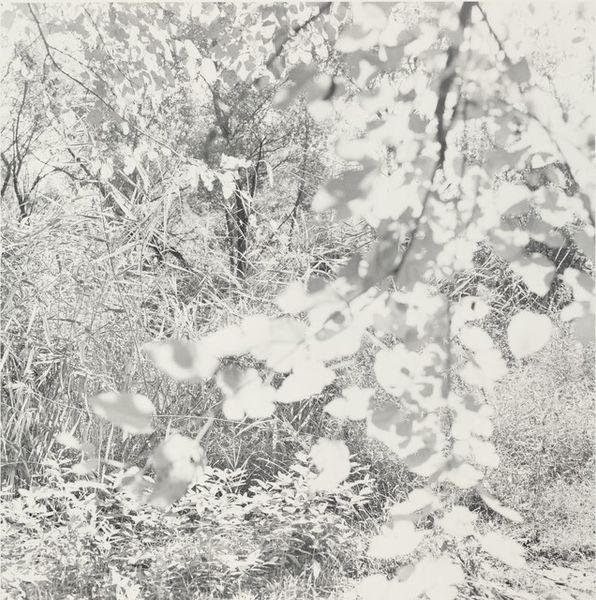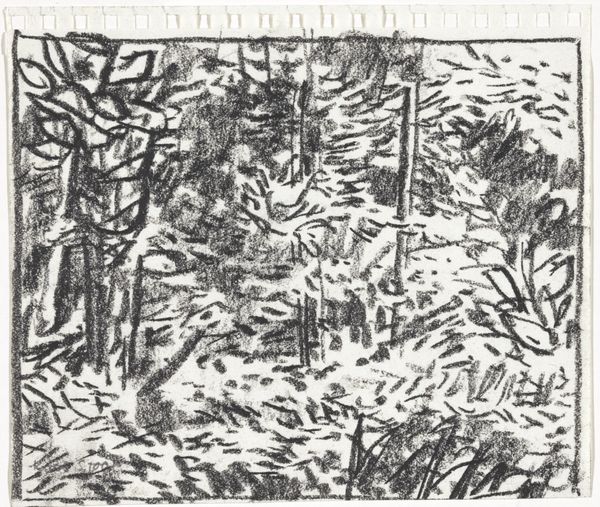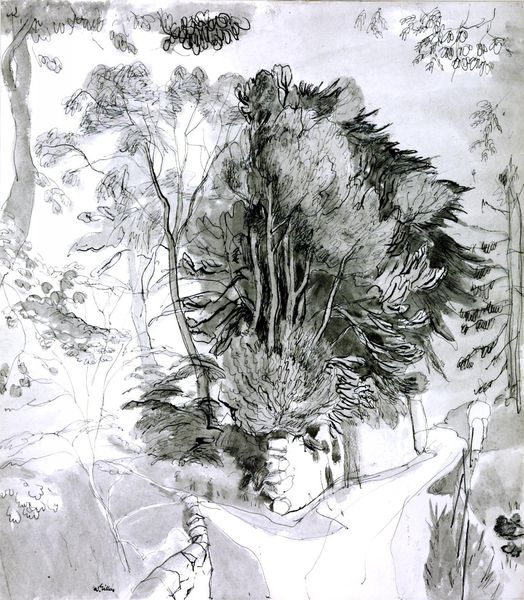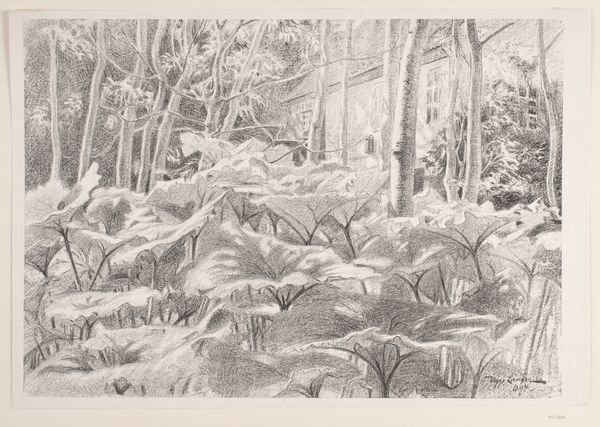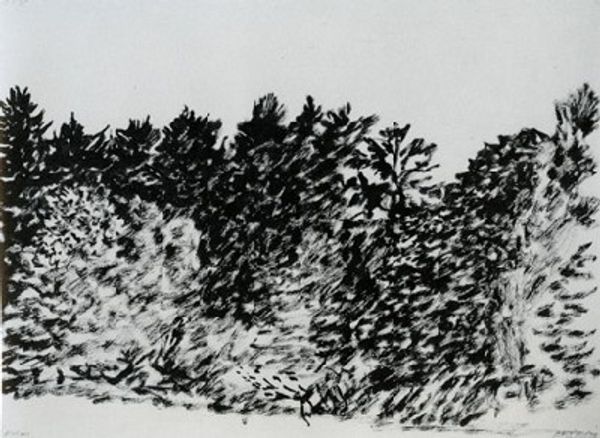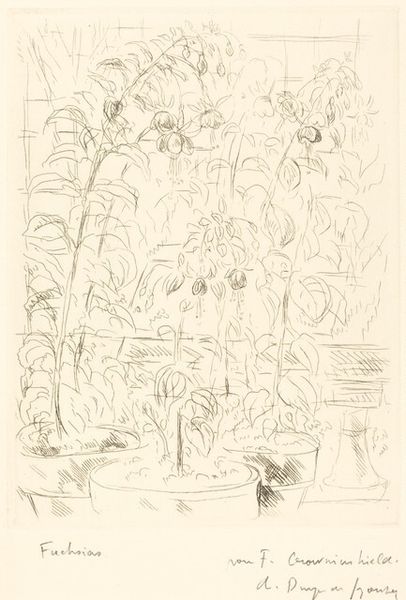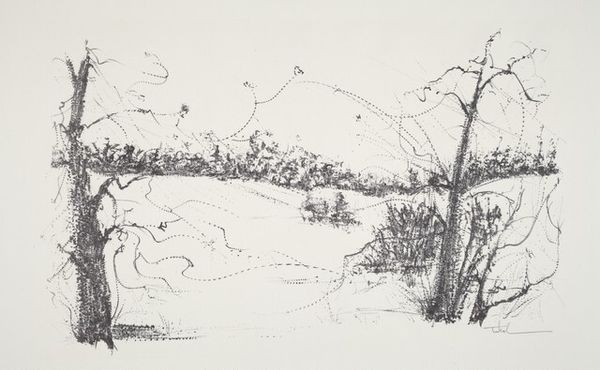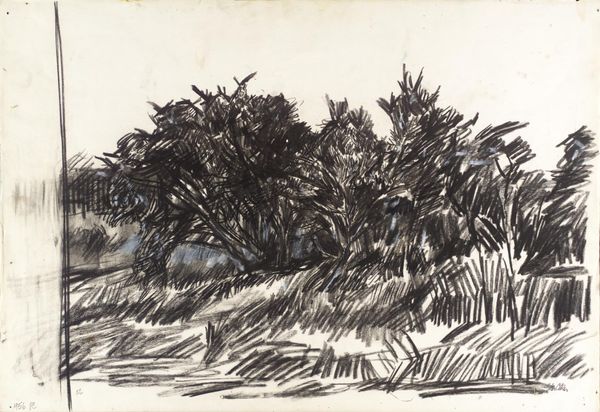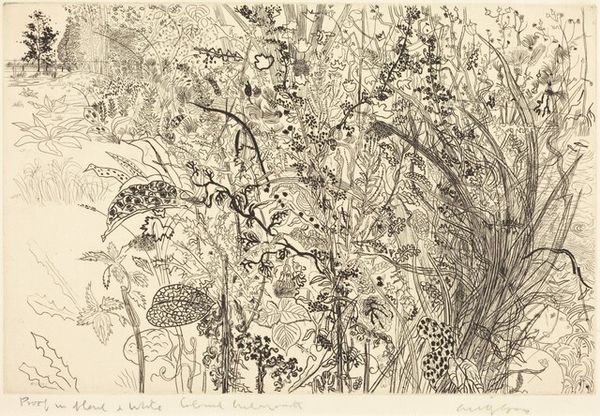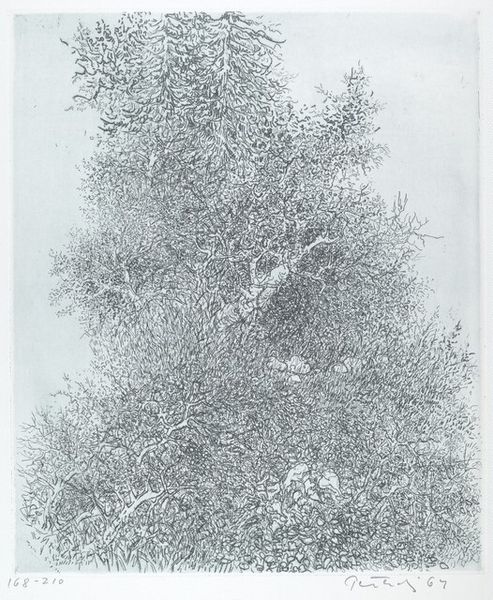
drawing, print, pencil, graphite
#
drawing
# print
#
landscape
#
pencil
#
line
#
graphite
#
realism
Dimensions: image: 34.2 × 53 cm (13 7/16 × 20 7/8 in.)
Copyright: National Gallery of Art: CC0 1.0
Curator: Prentiss Taylor's "Cottonwoods in Canyon de Chelly," dating to 1963, is a delicate pencil and graphite drawing showcasing his mastery of line and form. The artist has managed to capture a tangible sense of place, the Southwest, in a deceptively simple monochrome work. Editor: My immediate response is tranquility. The intricate branches soften the towering canyon walls, creating a haven-like feeling. The textures invite a tactile experience almost, particularly in the rendering of the cottonwood leaves and the sheep's wool. Curator: The composition is carefully arranged to showcase the interplay between the natural landscape and human activity, placing an emphasis on traditional practices, like shepherding. Taylor was deeply invested in portraying the dignity of ordinary life. Canyon de Chelly itself has significant historical weight as well, as a homeland. Editor: Exactly. And in many cultures, the sheep acts as a potent symbol: vulnerability and pastoral innocence on the one hand, economic and communal stability on the other. Considering its scale, the drawing offers remarkable intricacy of symbolic meaning and visual impact. Curator: This resonates well with the historic treatment of land within cultural imagination. Landscape painting throughout Western art history has largely erased traces of those who occupied that land before white settlers, particularly Indigenous people. Even within a simple scene with cottonwoods and sheep, Taylor contributes to that ongoing visual discourse of place. Editor: Absolutely. While outwardly representational, Taylor's work delves deeper than mere scenic observation. I read in it, too, the tension between the permanence of nature – the ancient canyon walls – and the ephemeral nature of human existence. The sheep almost become symbolic of our fleeting presence, contrasted with nature’s endurance. Curator: An insightful interpretation. Taylor’s engagement with depicting rural communities during a time of massive social change lends particular relevance to today's discussions of land rights, resource extraction, and cultural preservation, making it an important drawing of place and people. Editor: Indeed, viewing the scene through this lens allows for contemplation on preservation and respect for traditions intertwined with the land. Taylor, through the universal symbolism and beautiful realism, delivers us straight to the intersection of time, culture, and environment.
Comments
No comments
Be the first to comment and join the conversation on the ultimate creative platform.
